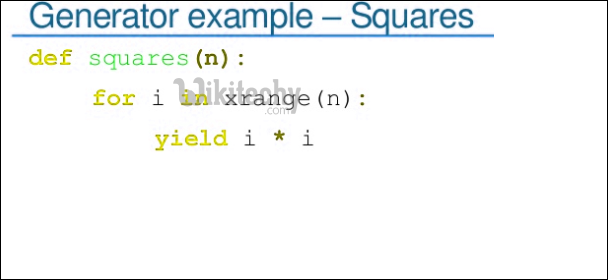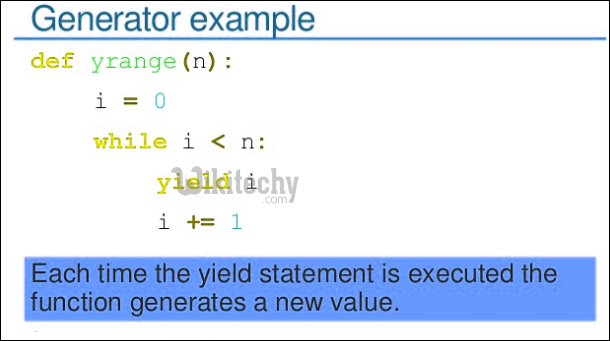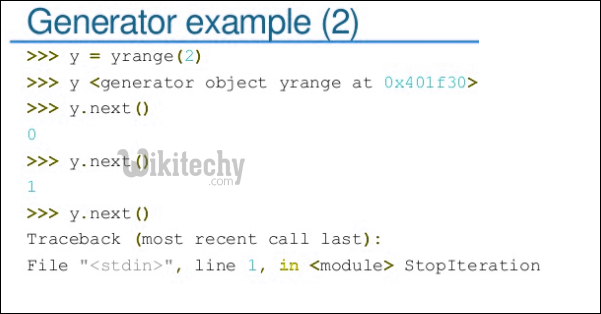There are two terms involved when we discuss generators.

- Generator-Function : A generator-function is defined like a normal function, but whenever it needs to generate a value, it does so with the yield keyword rather than return. If the body of a def contains yield, the function automatically becomes a generator function.
python - Sample - python code :
# A generator function that yields 1 for first time,
# 2 second time and 3 third time
def simpleGeneratorFun():
yield 1
yield 2
yield 3
# Driver code to check above generator function
for value in simpleGeneratorFun():
print(value)python programming - Output :
1 2 3
- Generator-Object : Generator functions return a generator object. Generator objects are used either by calling the next method on the generator object or using the generator object in a “for in” loop (as shown in the above program).

python - Sample - python code :
# A Python program to demonstrate use of
# generator object with next()
# A generator function
def simpleGeneratorFun():
yield 1
yield 2
yield 3
# x is a generator object
x = simpleGeneratorFun()
# Iterating over the generator object using next
print(x.next()); # In Python 3, __next__()
print(x.next());
print(x.next());python programming - Output :
1 2 3
So a generator function returns an generator object that is iterable, i.e., can be used as an Iterators.

As another example, below is a generator for Fibonacci Numbers.

python - Sample - python code :
# A simple generator for Fibonacci Numbers
def fib(limit):
# Initialize first two Fibonacci Numbers
a, b = 0, 1
# One by one yield next Fibonacci Number
while a < limit:
yield a
a, b = b, a + b
# Create a generator object
x = fib(5)
# Iterating over the generator object using next
print(x.next()); # In Python 3, __next__()
print(x.next());
print(x.next());
print(x.next());
print(x.next());
# Iterating over the generator object using for
# in loop.
print("\nUsing for in loop")
for i in fib(5):
print(i)python programming - Output :
0 1 1 2 3 Using for in loop 0 1 1 2 3
Applications : Suppose we to create a stream of Fibonacci numbers, adopting the generator approach makes it trivial; we just have to call next(x) to get the next Fibonacci number without bothering about where or when the stream of numbers ends.
A more practical type of stream processing is handling large data files such as log files. Generators provide a space efficient method for such data processing as only parts of the file are handled at one given point in time. We can also use Iterators for these purposes, but Generator provides a quick way (We don’t need to write __next__ and __iter__ methods here).
